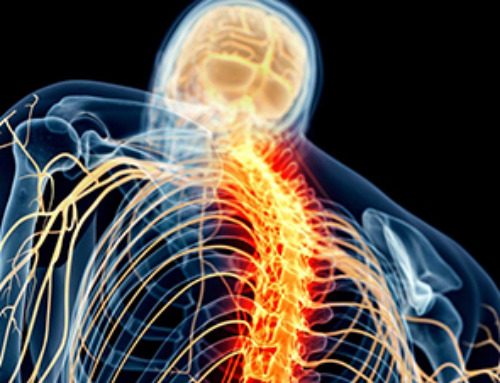Brain-computer interfaces, or BCIs, hold immense potential for individuals with a wide range of neurological conditions, but the road to implementation is long and nuanced for both the invasive and noninvasive versions of the technology.
Bin He of Carnegie Mellon University is highly driven to improve noninvasive BCIs, and his lab uses an innovative electroencephalogram (EEG) wearable to push the boundaries of what’s possible.
For the first time on record, the group successfully integrated a novel focused ultrasound stimulation to realize bidirectional BCI that both encodes and decodes brain waves using machine learning in a study with 25 human subjects. This work opens up a new avenue to significantly enhance not only the signal quality, but also, overall nonivasive BCI performance by stimulating targeted neural circuits.
Noninvasive BCI is lauded for its merits of being cheap, safe and virtually applicable to everyone. But because signals are recorded over the scalp versus inside the brain, low signal quality presents some limitations. The He group is exploring ways to improve the effectiveness of noninvasive BCIs and, over time, has used deep learning approaches to decode what an individual was thinking and then facilitate control of a cursor or robotic arm.
In their latest research, published in Nature Communications, the He group demonstrated that through precision noninvasive neuromodulation using focused ultrasound, the performance of a BCI could be improved for communication.
“This paper reports a breakthrough in noninvasive BCIs by integrating a novel focused ultrasound stimulation to realize bidirectional BCI functionality,” explained He, professor of biomedical engineering.
“Using a communication prosthetic, 25 human subjects spelled out phrases like ‘Carnegie Mellon’ using a BCI speller. Our findings showed that the addition of focused ultrasound neuromodulation significantly boosted the performance of EEG-based BCI. It also elevated theta neural oscillation that enhanced attention and led to enhanced BCI performance.”
For context, a BCI speller is a 6 x 6 visual motion aide containing the entire alphabet that is commonly used by nonspeakers to communicate. In He’s study, subjects donned an EEG cap and just by looking at the letters, were able to generate EEG signals to spell the desired words.
When a focused ultrasound beam was applied externally to the V5 area (part of the visual cortex) of the brain, the performance of the noninvasive BCI greatly improved among subjects. The neuromodulation-integrated BCI actively altered the engagement of neural circuits to maximize the BCI performance, compared to previous uses, which consisted of pure processing and decoding recorded signals.
“The BRAIN Initiative has supported more than 60 ultrasound projects since its inception. This unique application of noninvasive recording and modulation technologies expands the toolkit, with a potentially scalable impact on assisting people living with communication disabilities,” said Dr. Grace Hwang, program director at the Brain Research Through Advancing Innovative Neurotechnologies initiative (The BRAIN Initiative) at the National Institutes of Health (NIH).
Following this discovery, the He lab is further investigating the merits and applications of focused ultrasound neuromodulation to the brain, beyond the visual system, to enhance noninvasive BCIs. They also aim to develop a more compact-focused ultrasound neuromodulation device for better integration with EEG-based BCIs, and to integrate AI to continue to enhance the overall system performance.
“This is my lifelong interest, and I will never give up,” emphasized He. “Working to improve noninvasive technology is difficult, but I strongly believe that if we can find a way to make it work, everyone will benefit. I will keep working, and someday, noninvasive lifesaving technology will be available for every household.”
More information: Joshua Kosnoff et al, Transcranial focused ultrasound to V5 enhances human visual motion brain-computer interface by modulating feature-based attention, Nature Communications (2024). DOI: 10.1038/s41467-024-48576-8
News
Specially engineered antibody delivers RNA therapy to treatment-resistant tumors
Elias Quijano, PhD; Diana Martinez-Saucedo, PhD; Zaira Ianniello, PhD; and Natasha Pinto-Medici, PhD, there are 25 other contributors, most from Yale's Department of Therapeutic Radiology and from the departments of genetics, molecular biophysics and [...]
Vaccinated women face fewer cervical cancer risks
New data from Denmark shows the HPV vaccine’s powerful long-term impact, while also revealing why cervical cancer screening is still essential. A Danish study published in the journal Eurosurveillance reports that women who received the human [...]
3D-printed implant offers a potential new route to repair spinal cord injuries
A research team at RCSI University of Medicine and Health Sciences has developed a 3-D printed implant to deliver electrical stimulation to injured areas of the spinal cord, offering a potential new route to [...]
Nanocrystals Carrying Radioisotopes Offer New Hope for Cancer Treatment
The Science Scientists have developed tiny nanocrystal particles made up of isotopes of the elements lanthanum, vanadium, and oxygen for use in treating cancer. These crystals are smaller than many microbes and can carry isotopes of [...]
New Once-a-Week Shot Promises Life-Changing Relief for Parkinson’s Patients
A once-a-week shot from Australian scientists could spare people with Parkinson’s the grind of taking pills several times a day. The tiny, biodegradable gel sits under the skin and releases steady doses of two [...]
Weekly injectable drug offers hope for Parkinson’s patients
A new weekly injectable drug could transform the lives of more than eight million people living with Parkinson's disease, potentially replacing the need for multiple daily tablets. Scientists from the University of South Australia [...]
Most Plastic in the Ocean Is Invisible—And Deadly
Nanoplastics—particles smaller than a human hair—can pass through cell walls and enter the food web. New research suggest 27 million metric tons of nanoplastics are spread across just the top layer of the North [...]
Repurposed drugs could calm the immune system’s response to nanomedicine
An international study led by researchers at the University of Colorado Anschutz Medical Campus has identified a promising strategy to enhance the safety of nanomedicines, advanced therapies often used in cancer and vaccine treatments, [...]
Nano-Enhanced Hydrogel Strategies for Cartilage Repair
A recent article in Engineering describes the development of a protein-based nanocomposite hydrogel designed to deliver two therapeutic agents—dexamethasone (Dex) and kartogenin (KGN)—to support cartilage repair. The hydrogel is engineered to modulate immune responses and promote [...]
New Cancer Drug Blocks Tumors Without Debilitating Side Effects
A new drug targets RAS-PI3Kα pathways without harmful side effects. It was developed using high-performance computing and AI. A new cancer drug candidate, developed through a collaboration between Lawrence Livermore National Laboratory (LLNL), BridgeBio Oncology [...]
Scientists Are Pretty Close to Replicating the First Thing That Ever Lived
For 400 million years, a leading hypothesis claims, Earth was an “RNA World,” meaning that life must’ve first replicated from RNA before the arrival of proteins and DNA. Unfortunately, scientists have failed to find [...]
Why ‘Peniaphobia’ Is Exploding Among Young People (And Why We Should Be Concerned)
An insidious illness is taking hold among a growing proportion of young people. Little known to the general public, peniaphobia—the fear of becoming poor—is gaining ground among teens and young adults. Discover the causes [...]
Team finds flawed data in recent study relevant to coronavirus antiviral development
The COVID pandemic illustrated how urgently we need antiviral medications capable of treating coronavirus infections. To aid this effort, researchers quickly homed in on part of SARS-CoV-2's molecular structure known as the NiRAN domain—an [...]
Drug-Coated Neural Implants Reduce Immune Rejection
Summary: A new study shows that coating neural prosthetic implants with the anti-inflammatory drug dexamethasone helps reduce the body’s immune response and scar tissue formation. This strategy enhances the long-term performance and stability of electrodes [...]
Scientists discover cancer-fighting bacteria that ‘soak up’ forever chemicals in the body
A family of healthy bacteria may help 'soak up' toxic forever chemicals in the body, warding off their cancerous effects. Forever chemicals, also known as PFAS (per- and polyfluoroalkyl substances), are toxic chemicals that [...]
Johns Hopkins Researchers Uncover a New Way To Kill Cancer Cells
A new study reveals that blocking ribosomal RNA production rewires cancer cell behavior and could help treat genetically unstable tumors. Researchers at the Johns Hopkins Kimmel Cancer Center and the Department of Radiation Oncology and Molecular [...]





















